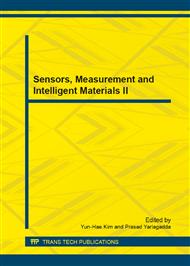[1]
J. Song, J. Singh, C.K. Koh, Y.S. Ong, C.W. See. Grid Workflow Management System. InternatiOn Technology[C], 2007, 11(4): 50-57.
Google Scholar
[2]
Guanyu, Deng hui, Wang feng, Ji kaifan. Scientific workflow technology and application in astronomical research discussed[J]. Astronomical research and technology. 2011, 8(4): 403-409.
Google Scholar
[3]
Huang fuhua. Summary of grid workflow technology[J]. Fujian computer. 2008(1): 1-2.
Google Scholar
[4]
Li weihong, Zhang shaohua, Zhu jingcui. The researching status and existing problems of Grid workflow[J]. Computer science. 2005, 32(11): 11-15.
Google Scholar
[5]
Gao juan, Jiang liqun. Web service combination is based on the WSFL[J] . Computer engineering and design. 2006, 27(9): 1652-1655.
Google Scholar
[6]
Xie cuiping, Wang long, Zhao yun. Workflow language technology application research based on grid workflow[J]. Fujian computer. 2007, (3): 114-115.
Google Scholar
[7]
Martin Alt, Sergei Gorlatch, Andreas Hoheisel, Hans-Werner Pohl. A Grid Workflow Language Using High-Level Petri Nets. CoreGRID Technical Report Number TR-0000[C], Institute on Grid Information and Monitoring Services CoreGRID-Network of Excellence. (2006).
DOI: 10.1007/11752578_86
Google Scholar
[8]
Marian Bubak, Piotr Nowakowski, Steffem Unger. K-WfGrid –Knowledge-Based Workflow System for Grid Applications[C]. Academic Computer Centre CYFRONET AGH ul. (2006).
Google Scholar
[9]
Marek Wieczorek, Thomas Fahringer. K-WfGrid Scheduler-Scheduling Grid Workflows Based on Prediction and Performance Knowledge[C]. Academic Computer Centre CYFRONET AGH ul. (2006).
Google Scholar
[10]
Zeng hongwei, Li qi , Miu huaikou. A synthetic grid service and Web service workflow language[J]. Computer application and software. 2005, 22(10): 84-86.
Google Scholar
[11]
Meng rongxia, Shao weimin, Xiong jilin. Designing and implementation of visualization grid workflow process definition tool[J]. Computer engineering and design. 2007, 28(14): 3361-3366.
Google Scholar
[12]
Thomas Fahringer, Sabri Pllana, Alex Villazon. AGW: Abstract Grid Workflow Language[C]. Proceedings of IEEE International Symposium on Cluster Computing and the Grid. (2005).
DOI: 10.1109/ccgrid.2005.1558629
Google Scholar
[13]
Thomas Fahringer, Jun Qin, Stefan Hainzer. Specification of Grid Workflow Applications with AGWL: An Abstract Grid Workflow Language[C]. Proceedings of IEEE International Symposium on Cluster Computing and the Grid. (2005).
DOI: 10.1109/ccgrid.2005.1558629
Google Scholar
[14]
Jun Qin, Thomas Fahringer. Advanved Data Flow Support for Scientific Grid Workflow AppLications[C]. Proceedings of the International Conference on High Performance Computing , Networking, Storage and Analysis. (2007).
DOI: 10.1109/sc.2008.5214432
Google Scholar


